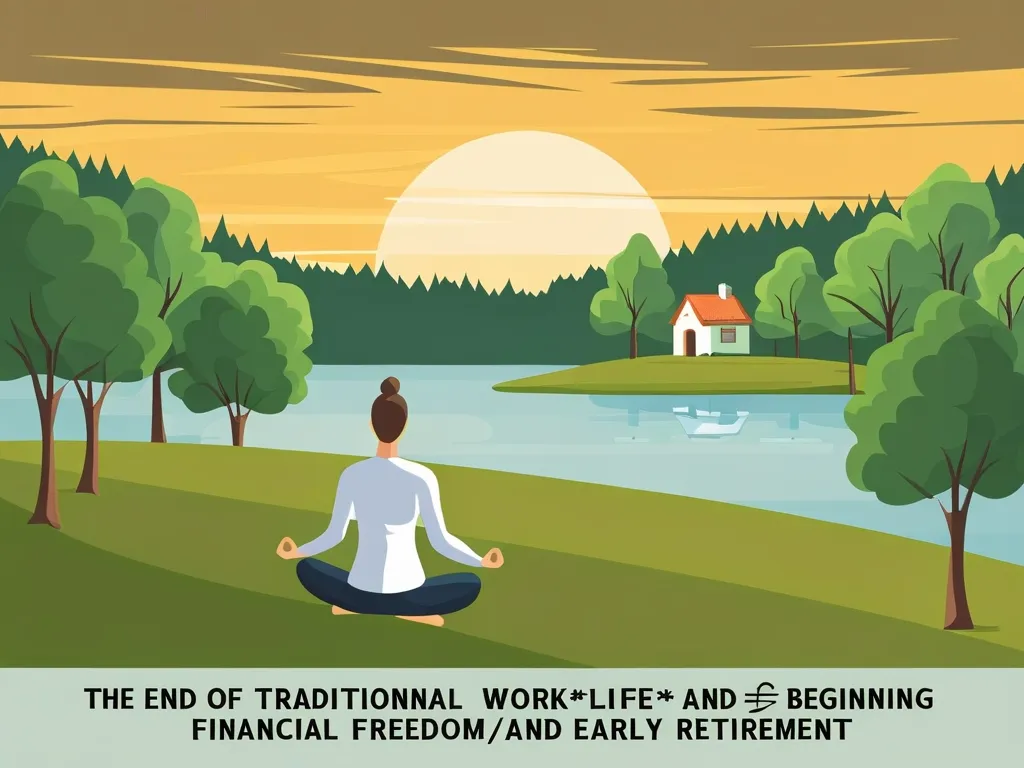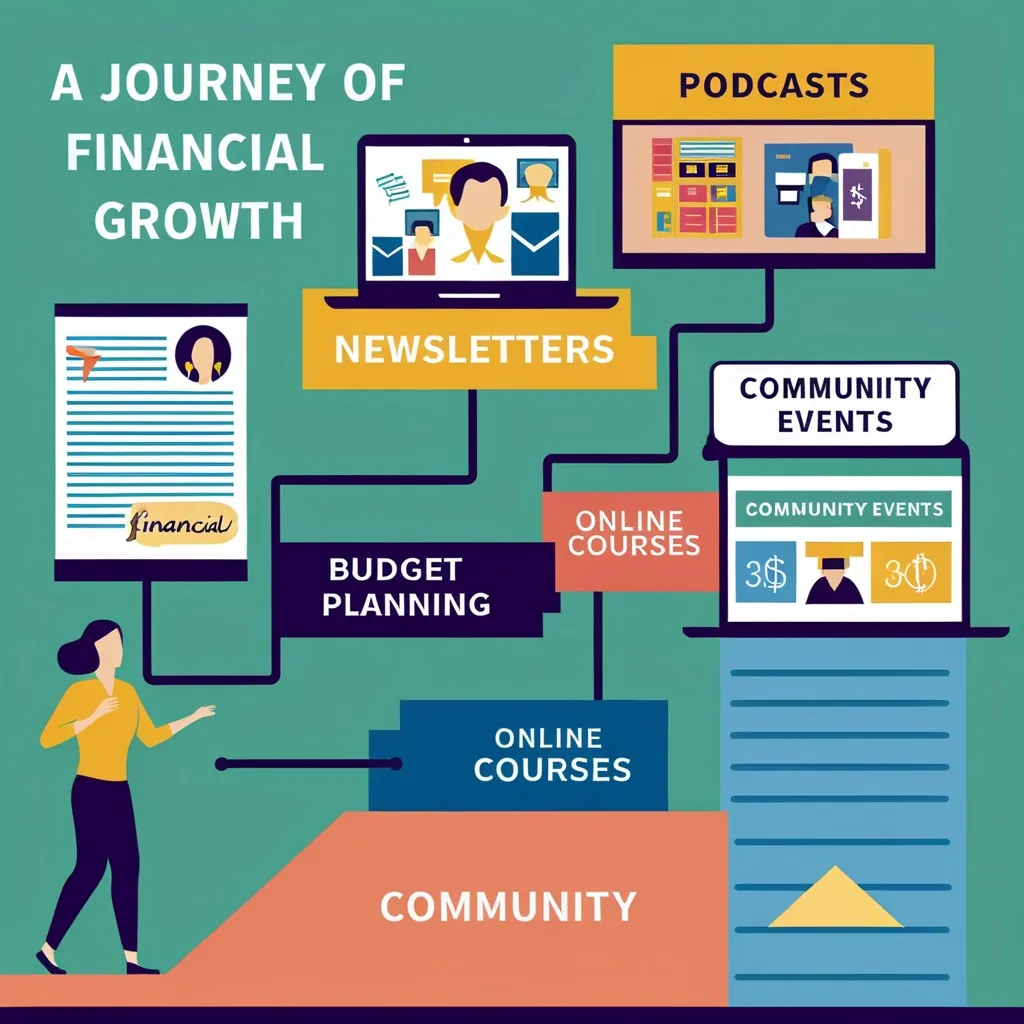Imagine waking up one morning in your 40s, feeling financially free, and having the option to retire early. This isn’t a fantasy for many people who are part of the Financial Independence, Retire Early (FIRE) movement. This radical approach to retirement is redefining how we think about work, money, and life.
The FIRE Movement
At its core, the FIRE movement is about achieving financial independence, which means having enough savings and investments to cover your living expenses without needing to work. It’s a two-part concept: Financial Independence (FI) and Retire Early (RE). While financial independence is a universally appealing goal, retiring early comes with its own set of challenges and considerations.
For instance, if you have a million dollars and spend $100,000 per year, your money will last 10 years. However, if you manage to live on just $25,000 per year, that same million dollars can last 40 years. This simple math highlights the power of keeping your expenses low, a key principle of the FIRE movement.
Extreme Saving and Frugal Living
One of the more extreme versions of the FIRE movement is the Early Retirement Extreme (ERE) philosophy. This approach involves radical saving, prudent investing, and a very frugal lifestyle. It’s not about living in deprivation but making a deliberate choice to forgo immediate gratification for long-term financial autonomy.
For example, someone following the ERE path might choose to live in a small apartment, cook all their meals, and avoid any form of consumer debt. This lifestyle isn’t for everyone, but for those who adopt it, the reward is financial independence at a relatively young age, often in their 30s or 40s.
The Power of Dual Income
For many, achieving financial independence by 40 seems like a dream, but it’s more feasible than you might think, especially if you have a dual income household. Consider a couple where one partner earns $150,000 and the other $80,000, totaling $230,000 per year. If they manage to save aggressively and invest wisely, they can amass a significant nest egg in a short period.
For instance, a couple with a combined income of $230,000, who spend less than half of that, can save and invest the rest. Assuming a reasonable return rate of 6-7%, they could reach their retirement goal of $2.5 million in about 10 years. This is especially true if they maintain a low expense ratio and avoid lifestyle inflation.
Overemployed: A New Path to FIRE
Another innovative approach to achieving FIRE is the “Overemployed” (OE) method. This involves working multiple remote jobs simultaneously to significantly boost your income. By living off one job’s income and saving the rest, you can accelerate your path to financial independence.
Imagine having two full-time jobs, each paying around $150,000 annually, plus passive income from investments. This setup allows for rapid savings and investment, making it possible to reach financial independence in as little as five to seven years. The OE method also offers the flexibility to adjust your work load and stress levels, making the journey to FIRE more manageable and fulfilling.
Challenges of Early Retirement
While the idea of retiring early is appealing, it comes with its own set of challenges. One of the biggest concerns is what to do with all that free time. Unlimited leisure can be a double-edged sword; it can lead to boredom, loss of purpose, and even health issues like Alzheimer’s and dementia.
For example, someone who retires at 40 might find themselves with 50+ years of unstructured time ahead. Without a plan, this can lead to a life of watching TV or engaging in hobbies that no longer provide the same satisfaction they did when they were a break from work. To avoid this, many early retirees find it essential to stay engaged through part-time work, volunteering, or starting a new business.
Housing and Healthcare Costs
Two significant variables to consider when planning for early retirement are housing and healthcare costs. Owning a home can lock in your housing costs, providing stability, but it also comes with maintenance and property tax expenses. On the other hand, renting can offer flexibility but may involve unpredictable rent increases.
Healthcare costs are another critical factor, especially in countries like the US where healthcare can be expensive. Early retirees need to plan for these costs carefully, often setting aside a significant portion of their savings for medical expenses until they reach the age of 65 and become eligible for programs like Medicare.
Tax Considerations
Taxes are another important aspect to consider when planning for early retirement. Different countries have different tax laws, and even within the same country, tax rates can vary significantly depending on where you live. For instance, some countries tax dividends and capital gains, which can impact your retirement income.
Understanding these tax implications is crucial to ensure that your retirement savings last as long as you need them to. It might be wise to consult with a financial advisor to optimize your tax strategy and make the most of your savings.
Social and Psychological Impacts
Leaving a career, especially one that has been a significant part of your identity, can lead to an identity crisis. Finding new purpose and fulfillment in post-career life can be challenging. Transitioning from a structured work life to the freedom of early retirement can be psychologically jarring, requiring adjustments to your daily routines and sense of self.
For example, someone who has always defined themselves by their job might struggle to find meaning in their life after retirement. Joining community groups, taking up new hobbies, or volunteering can help fill this void and provide a new sense of purpose.
Balancing Present and Future
While the FIRE movement advocates for aggressive saving and investing, it’s also important to enjoy the present. Finding a balance between saving for the future and living in the moment is key.
Consider adopting some elements of minimalism and frugality without going to the extremes of ERE. This could mean saving aggressively but still allowing for some present-day enjoyment. A gradual transition to retirement, such as shifting to part-time work or freelance projects, can also help you adjust to the new lifestyle without feeling deprived.
Living Intentionally
The essence of the FIRE movement is about living intentionally. It’s not just about saving money; it’s about redefining what success and fulfillment mean to you. By focusing on financial independence, you gain the flexibility to do what you want, when you want.
For instance, if you’ve always dreamed of traveling or pursuing a passion project, financial independence gives you the freedom to do so. It’s about aligning your financial decisions with your personal values and goals, rather than just accumulating wealth for its own sake.
Conclusion
Achieving financial independence by 40 is not just a pipe dream; it’s a reality for many who are part of the FIRE movement. Whether you choose the extreme saving route of ERE, the multiple income streams of OE, or a more moderate approach, the key is to live intentionally and make financial decisions that align with your values.
It’s about understanding the challenges of early retirement and planning accordingly. It’s about finding a balance between saving for the future and enjoying the present. And most importantly, it’s about redefining what retirement means to you and living a life that is truly fulfilling. So, if you’re considering joining the FIRE movement, remember that it’s not just about the money; it’s about the freedom and purpose that come with it.






